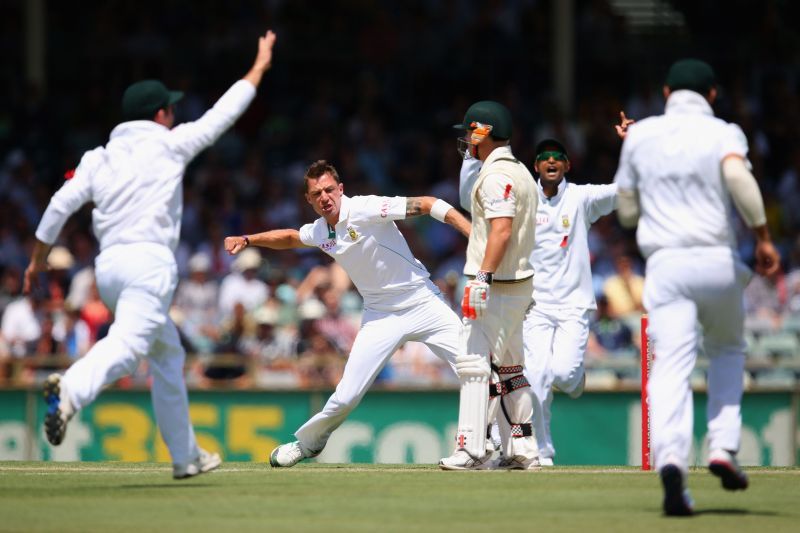
The 5 best Test fast bowlers of all time
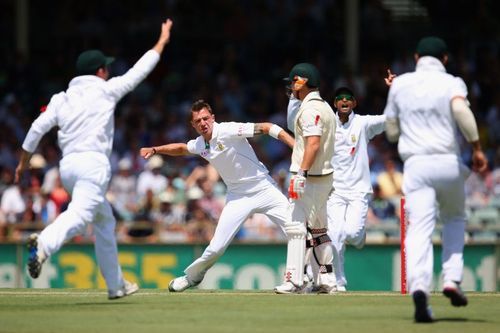
The lack of cricket right now has hit all cricket lovers very hard but while we wait for cricket to restart, why not have a look at the five best fast bowlers of all time in Test cricket?
There is no better sight in world cricket than a big burly fast bowler steaming in and delivering a peach at 140 km per hour. But a few men did this more often than others. In this piece, I take a look at a list of the top five greatest bowlers of all time in Test cricket based on various stats.
For the said analysis, we would primarily look at two critical metrics for a bowler, the average and the strike rate. For those who are unfamiliar with these two terms, a bowler's average is the number of runs he concedes before taking a wicket. The strike rate of a bowler is the number of balls bowled before taking a wicket.
We will also look at their performances overseas just how we would go with a batsman to judge whether their charms worked overseas as well or not. The 15 bowlers we will be looking at are the best performing bowlers according to ESPN Cricinfo during the period 1970 - 2020 and have played at least 50 Test matches.
Malcolm Marshall, Joel Garner, Curtly Ambrose, Glenn McGrath, Allan Donald, Sir Richard Hadlee, Imran Khan, Dale Steyn, Shaun Pollock, Wasim Akram, Waqar Younis, Dennis Lillee, Courtney Walsh, Stuart Broad, Jimmy Anderson are all legends in Test cricket. But who makes the best five among this fierce and fast group?
5-best fast bowlers of all time in Test cricket:
#1: Longevity:
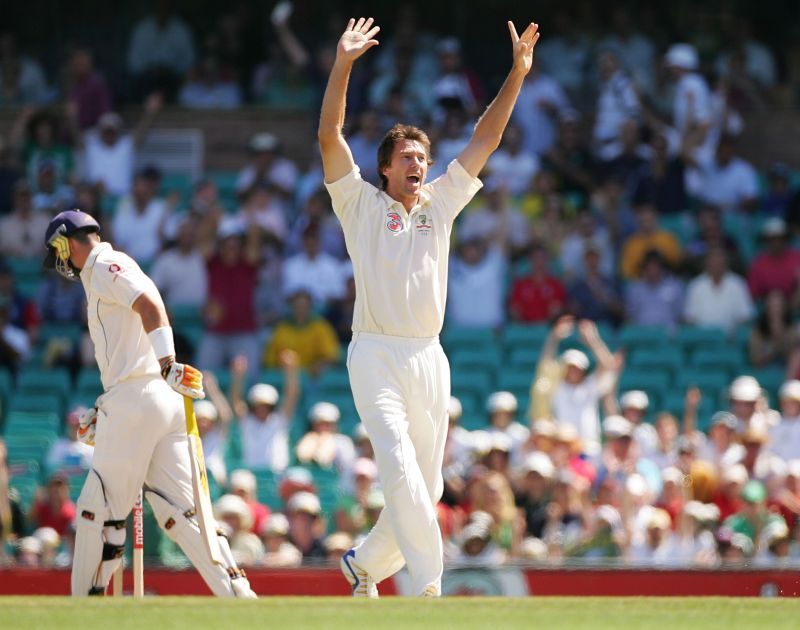
Let's start with our first metric, the fundamental metric that will not be as impactful as other metrics. Who took the most wickets or rather whose longevity was the highest?
Out of the current pool, Jimmy Anderson has the highest Test wickets (584) over 151 Test matches, which is an indicator of incredible longevity. Following him closely is the big Aussie Glenn McGrath with 563 Test wickets over 124 games. In third place is Courtney Walsh with 519 Test tickets.
Longevity alone does not mean much in terms of the quality of fast bowling in Test cricket. But these three players displayed incredible longevity and fitness in Test matches over a considerable period.
# 2: Average:
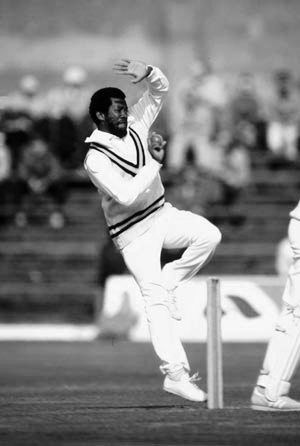
Now, we can get into the more exciting stuff and probably one of the most important metrics- the average.
The lowest Test average for a fast bowler who played a minimum 50 Tests, belongs to Malcolm Marshall. The big West Indian quickie had an incredible average of 20.94 over 81 matches. When looking into more detail and the fine print, Marshall's statistics look even better.
Away from home, he averaged at 21.57 over 50 Test matches, while still maintaining a healthy average of 23 particularly in unfavourable Asian conditions where the pitches are not conducive to fast bowling. In a formidable Windies team, Marshall was a proven match-winner, averaging under 17 in games that the West Indies won. His incredible statistics put him in contention for a top 5 spot.
Not far behind Marshall is his former teammate, Joel Garner, who had an average of 20.97. However, what goes against Garner is that he only played 58 Test matches compared to Marshall's 81. Garner was phenomenal in England and New Zealand. But he was not as good away from home, averaging nearly 26 against the second-best Test side in that era, Australia. What stands out for Garner, however, is his phenomenal average of 19.74 overseas across 29 Test matches which goes on to show the sheer quality Garner had.
A third West Indian bowler rounds up our top 3. He is Sir Curtly Ambrose. Ambrose took over the West Indian bowling attack from the famed quartet of Marshall, Garner, Colin Craft and Sir Andy Roberts. Some would say Ambrose even exceeded the quartet.
Ambrose had a remarkable average of 20.99 over 98 Test matches while taking over 400 wickets. He was another West Indian pacer, who like Garner, averaged better overseas than at home. Unfortunately, he did not play much in Asia. In the six Tests that he played in Asia, Ambrose averaged 22.50.
The team of Curtly Ambrose's generation faced competition from the mighty Australians as the power of the West Indies began to wane during this period. Yet Ambrose's best Test performances came in Australia where he averaged a miserly 19.79.
Performing against the toughest competition is something that must be taken into account in our evaluation, and Ambrose was also a big game player to boot. South Africa and Pakistan were the two other big Test teams in the '90s. While Ambrose didn't do as well against Pakistan, averaging about 28, he was superb against South Africa.
Apart from the trio above, a fourth special mention deserves to go to Glenn McGrath. Apart from taking 563 Test wickets, which is a phenomenal achievement, McGrath averaged only 21.64 during his 14-year long career. The sheer number of wickets, added with his nagging consistency, makes McGrath a strong contender for the top 5.
McGrath was a force to be reckoned with even in the dry, challenging conditions in India where he averaged about 21. Like all great bowlers, McGrath did better overseas than at home. He played in what is generally regarded as one of the greatest Test teams of all time. South Africa were probably the second-best Test team during this period. McGrath's average sunk to around 27 against the Proteas which could go against him. However, Glenn McGrath's outstanding overall record makes him a shoo-in for the top 5.
# 3: Strike Rate
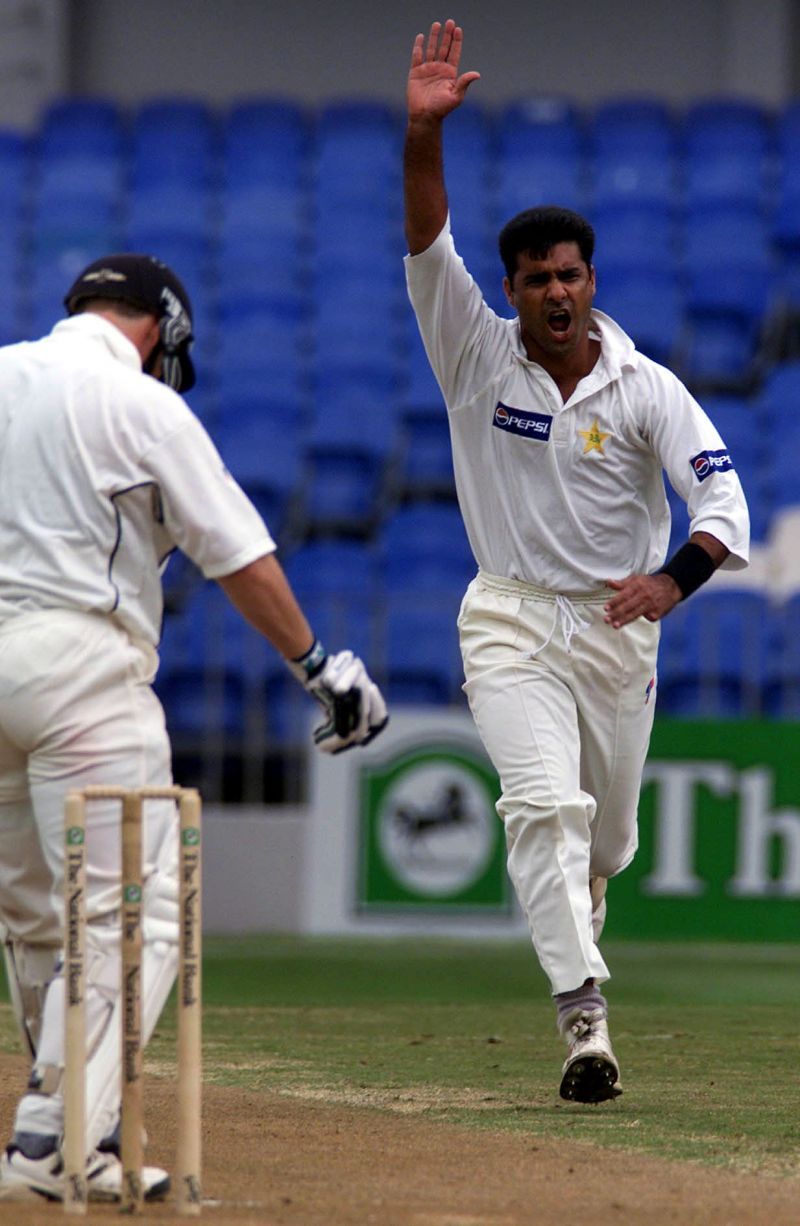
Now we can move on to the strike rate, which is another crucial metric to determine who belongs in the top 5. Strike rate is significant as fast bowlers bowl short spells in Test Cricket. A good strike rate is an indicator of a bowler taking wickets at regular intervals.
Topping the strike rate among fast bowlers to have played a minimum of 50 Tests is South African Dale Steyn. Dale Stay epitomises fast bowling, and his stats speak for himself. A strike rate of 42.3 over 93 Test matches is quite praise-worthy. It is almost frightening to think what Dale Steyn could have achieved had injuries not derailed him.
While he was a superior bowler at home, his strike rate was still an incredible 43.8 away from home. Against Australia, the best team of the era, Steyn struck at an impressive average of 46.2. An excellent strike rate paired with an impressive average of 22 makes him Steyn a strong contender for the Top 5.
The bowlers who bowled in the 2000s played against a batsman of the highest calibre. The likes of Sachin Tendulkar, Rahul Dravid, Ricky Ponting, Jacques Kallis and Kumar Sangakarra were in their prime during this period. This makes the stats of fast bowlers during this period look even better.
Waqar Younis has the best strike rate for a fast bowler after Steyn (qualification: minimum 50 Test matches). Younis took a wicket every 43.4 deliveries during an 87-game Test career. However, what negatively impacts Waqar Younis is that against Australia, the best team during his time, Younis struggled massively.
An overall average of 33 against the Aussies and an underwhelming average of 40.50 while playing in Australia does not look good in what is otherwise a brilliant resume. His overall overseas strike rate, however, was 47.2 which is impressive. In other Asian nations and the West Indies, Younis was very proficient.
Malcolm Marshall and Allan Donald round up the other fast bowlers with the best strike rates after Steyn and Younis, respectively striking at 46.7 and 47.0. We've discussed Marshall already and standing at number 3 in the strike rate category as well only affirms his case as a sure shot in our top 5.
The Final Analysis
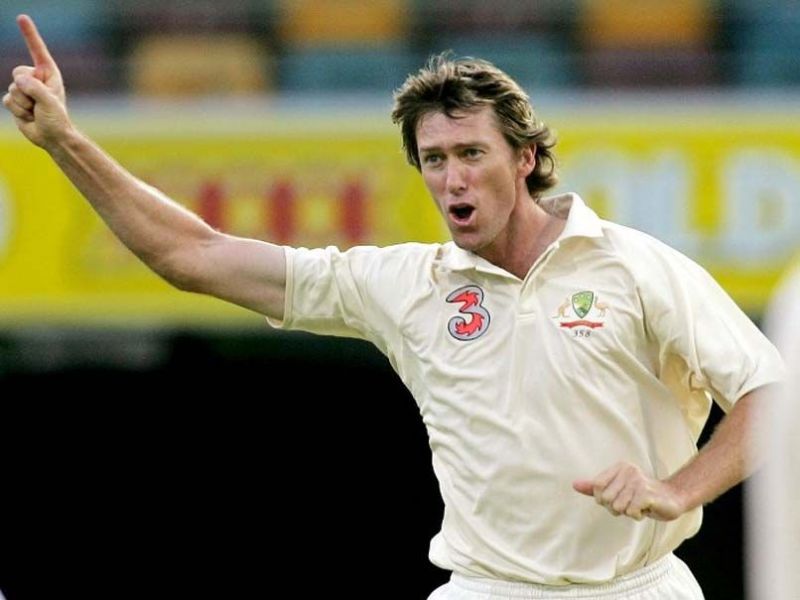
Allan Donald, also known as White Lighting, was the South African spearhead of the '90s, making the Proteas a formidable Test team after the apartheid era.
Like Younis, though, his average and strike rate fell against the Aussies. Donald's most noteworthy performances came against Asian teams like India, Sri Lanka and Pakistan. In fact, in India and Sri Lanka, Donald averaged below 20, showing his quality did not always need conducive conditions for him to excel.
Donald's importance to the Proteas side is reflected in his average when the team won. He averaged at 16.79 in Test wins, which meant a robust Allan Donald performance near guaranteed a South African Test win.
Now that we have the basic stats to look at, we can begin narrowing down our top 5. Based on stats alone, Malcolm Marshall takes one of the top 5 slots because of his outstanding average and strike rate. The lowest average and a solid strike rate across 81 Test matches makes it reasonably easy to decide our first name on this list.
Another name that is reasonably easy to decide is Glenn McGrath who not only has the second most Test wickets by a fast bowler but has an impressive average and strike rate as well. In an era where a plethora of world-class batsman emerged in Test Cricket, McGrath averaged nearly 20 during 2000-2009, which demonstrated his class. From here on, though, it gets slightly tougher as we narrow down who makes our last three spots.
Let's use the process of elimination based on the metrics seen so far. Jimmy Anderson has the most wickets of any bowler on this list, but he averages nearly 34 overseas which automatically puts him out of contention. Furthermore, against the best side of his generation, the Aussies, Anderson's average jumps up to 35. These stats put Anderson a world away from most bowlers on this list, many of whom performed equally well overseas.
Anderson's long-time bowling partner, Stuart Broad, averages 28.50 in Test matches, which also puts him out of contention for the Top 5. But what about the famous duo of Waqar Younis and Wasim Akram of Pakistan. Undoubtedly, one of them, if not both, would make our list? Well, let's look at their numbers first.
Firstly, as mentioned earlier, Waqar Younis has the second-best strike rate, which puts him in contention. However, taking a deeper glance at the numbers shows that against the best team of his generation, his numbers dipped. Statistically, South Africa and Australia were the best Test teams of the 1990s, and Waqar Younis' averages were very low against both teams. Younis' average rose at home when he played the somewhat less successful teams, which is why I cannot include him in this list.
But what about his partner in crime? Wasim Akram performed much better against Australia, averaging 25.76 in 13 Tests he played against the Aussies. Akram's average improved to 24 in Tests played in Australia. The left-armer's strike rate was significantly lower than that of Waqar Younis', but with more wickets, better overseas average and better performances against bigger teams, Wasim Akram will make this list in place of Younis.
Now, what about the three South Africans - Allan Donald, Dale Steyn and Shaun Pollock? Shaun Pollock was a bowler who had a decent average against every team. However, when it came to Australia, he struggled with an average of close to 37 in 13 Tests. Comparing this with a career average of 23 shows just how much he worked against the mighty Australians.
If not for his record against the Australians, Pollock would have been a definite inclusion. It is clear throughout this analysis that for many Australia have proven to be very challenging, which is all the more reason for a bowler to be placed higher when he has done well against Australia.
Allan Donald did not fare as badly against the mighty Aussies, averaging a little over 30 against them. His away average totalled 23, and he also performed very well against the third-best side of that generation, Pakistan. Apart from having a very impressive average, Donald's strike rate was 47, which is again phenomenal. All these metrics give Donald a strong chance at making the top 5.
Lastly, we have Dale Steyn. He not only has the best strike rate among the trio, but also has an average below 23 and an overall average of 27.47 against the Aussies while playing against them. India are considered the second-best test team during Dale Steyn's era, especially at home. Keeping that in mind, Dale Steyn has a fabulous average of 21.38 in India. All these factors make Dale Steyn a modern-day great and our third inclusion in this top 5. As for Donald, we'll have to wait and see how he fares against the rest.
Let's go a little back in time and look at the bowlers who started in the 1970s. Could one of them possibly have a chance here? The bowlers we would look for here are Sir Richard Hadlee, Dennis Lillee and Imran Khan.
We start with Imran Khan. Many know him to be one of the best all-rounders in Test cricket, but he was also an outstanding bowler as well. Not only did he perform well against all opposition, but he was also good overseas. Against the famed Windies of the '70s and '80s, Khan averaged 21.18 which is impressive. Furthermore, in games Pakistan won, he averaged close to 14, showing that he was a match-winner.
Based on his stats alone, Imran Khan has a good chance of becoming the second Pakistani in this list. But surprisingly, his strike rate isn't as good as Lillee's or Hadlee's. Against the same West Indian side, Lillee averaged above 27, which for me, given that he has a similar average as Khan, puts him behind the latter. His average against England was superb, but his stats do not match up with either Khan or Hadlee.
Hadlee, on the other hand, averaged 22.03 against the West Indies, had a superior strike rate compared to Khan and also averaged better overseas. Between 1982 and 1985, both Khan and Hadlee put up stunning numbers which makes for a tough call to choose one among the duo.
The other good teams during this period were Australia and England, both of whom boasted two of the best winning percentage in Tests during the 1970s. Hadlee not only had better averages against both these teams but also performed better away. Hadlee's superior performances overseas sees him edge out Imran Khan for a Top 5 spot.
Now we have just one spot left. For this spot, there is a battle between three West Indian greats- Courtney Walsh, Joel Garner and Curtly Ambrose. While Walsh has the most Test wickets out of the trio, his average is not close to either of the other two. Furthermore, against Australia, the best team of his time, Walsh averaged close to 28. Although his performances against Pakistan and South Africa were excellent, he will have to be out of contention.
So the last spot would be taken up by either Joel Garner or Curtly Ambrose. Let's look at Ambrose first: he took over 400 Test wickets at an average of under 21, while bowling at an average of under 22 against Australia. This alone puts him in a class of his own. What is most impressive about Ambrose is that usually, pacers show a decline in statistics towards the end of their careers. But even in his last year, Ambrose averaged under 18, which is remarkable.
While Joel Garner has better averages and strike rates, he only played 58 Test matches. Coincidentally, both played their worst cricket against India and some of their best against England. Garner's records across the board were equally phenomenal, and the only thing that goes against him is probably his longevity or rather the lack of it. However, Garner's statistics are so good that it would be criminal to leave him out of the list. Therefore, both Ambrose and Garner make my final list, and the plethora of talent takes my list from five to six bowlers.
These Test bowlers statistically were ahead of even their famous peers. Fittingly, the list has three West Indians in Garner, Marshall and Ambrose. Only one left-armer makes our list in the form of Wasim Akram. The master of line and length, Glenn McGrath, also makes this list.
Finally, a modern-day great in the form of Dale Steyn makes this list as well. So there it is, somehow and someway, I have managed to make a list of 6 out of these 16 incredible legends. However, it is important to note while statistics do uncover more than they reveal, they are not everything when it comes to judging a player. Feel free to let me know who you would have in your list of top 5 Test fast bowlers of all time.